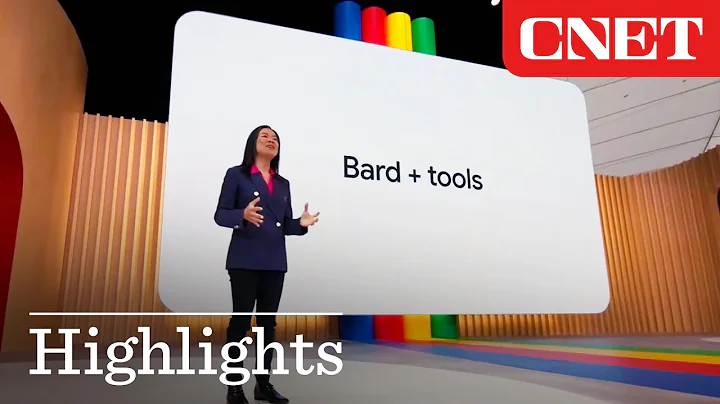Achieve Financial Independence and Retire Early: 10 Levels Revealed
Table of Contents
- Introduction
- Understanding Financial Independence
2.1 Definition of Financial Independence
2.2 Importance of Breaking Down the Goal
- The 10 Levels of Financial Independence
3.1 Level 0: Financial Dependence
3.2 Level 1: Financial Solvency
3.3 Level 2: Financial Stability
3.4 Level 3: Debt Freedom
3.5 Level 4: Coasting Financial Independence
3.6 Level 5: Financial Security
3.7 Level 6: Financial Flexibility
3.8 Level 7: Financial Independence
3.9 Level 8: Financial Freedom
3.10 Level 9: Financial Abundance
- A Hypothetical Journey to Financial Independence
4.1 John and Jane's Starting Point
4.2 Steps to Achieving Financial Independence
4.2.1 Level 1: Debt Repayment
4.2.2 Level 2: Building an Emergency Fund
4.2.3 Level 3: Achieving Debt Freedom
4.2.4 Level 4: Coasting Financial Independence
4.2.5 Level 5: Financial Security
4.2.6 Level 6: Financial Flexibility
4.2.7 Level 7: Financial Independence
4.2.8 Level 8: Financial Freedom
4.2.9 Level 9: Financial Abundance
- The Value of Tracking Progress
- Conclusion
Article
Understanding Financial Independence
Financial independence is a concept that many aspire to achieve in their lives. The idea of being free from the constraints of financial obligations and having the ability to live life on your own terms is a powerful motivator. However, the road to financial independence can often seem daunting and overwhelming, especially when faced with the enormity of long-term financial goals. This is where breaking down the goal of becoming financially independent into smaller, more manageable levels can be incredibly helpful.
The 10 Levels of Financial Independence
Breaking down financial independence into levels not only makes it easier to track progress but also helps to overcome the initial hurdles of starting the journey towards financial independence. Let's take a closer look at the 10 levels of financial independence:
Level 0: Financial Dependence
Financial dependence is the starting point for most individuals. In this level, debt payments and living expenses exceed income, making one reliant on someone or something else for financial support. Whether it's relying on parents or other means to meet basic needs, financial dependence lacks true financial independence.
Level 1: Financial Solvency
Financial solvency is achieved when all debt payments and financial commitments can be met without outside help. At this level, individuals are Current on their debt payments and are able to cover their living expenses independently, marking the first step towards true financial independence.
Level 2: Financial Stability
Financial stability is defined as having built an emergency fund in addition to being financially solvent. This level provides a buffer for unforeseen circumstances, ensuring that individuals have some financial security in the face of unexpected expenses or job loss.
Level 3: Debt Freedom
Debt freedom varies depending on personal circumstances. Some consider it as being completely debt-free, while others may view it as being free of high-interest debts such as credit cards but still having mortgage or student loan debt. Achieving debt freedom allows individuals to focus on building wealth rather than servicing debt.
Level 4: Coasting Financial Independence
Coasting financial independence, also known as freedom from an employer or barista financial independence, is achieved when individuals have saved enough to step down from a higher-paying, potentially more stressful job to one that is lower paying but more enjoyable and fulfilling. This level is possible by diligently saving and investing in the early years to Create a nest egg that sustains retirement.
Level 5: Financial Security
Financial security is reached when cash flow from investments covers essential survival expenses such as food, shelter, transportation, and insurance. It provides a Sense of peace knowing that even in the event of job loss, individuals can survive until they secure new employment.
Level 6: Financial Flexibility
Financial flexibility is similar to financial security but takes it a step further. It allows individuals to live off their current cash flow from investments while adjusting their spending Based on market fluctuations. By following a flexible spending plan, individuals can adjust their expenses in response to market ups and downs.
Level 7: Financial Independence
Financial independence is a significant milestone in the journey towards true financial freedom. It is often based on the 4% rule, where individuals have saved approximately 25 times their annual expenses. At this level, the investment returns are expected to cover living expenses, providing the freedom to choose how to spend their time.
Level 8: Financial Freedom
Financial freedom is attained when cash flow from investments exceeds the level of financial independence. At this level, individuals can meet not only their basic needs but also pursue additional life goals. It may include taking trips, moving to a desired location, or indulging in various experiences that enhance quality of life.
Level 9: Financial Abundance
Financial abundance refers to having excess cash flow from investments that surpass personal needs or desires. Individuals at this level have more than enough to cover their current lifestyle and can afford to indulge in even more luxuries or philanthropic endeavors.
A Hypothetical Journey to Financial Independence
To illustrate the path to financial independence, let's follow the journey of John and Jane, a young married couple. They start their financial journey with debt obligations, such as credit cards, car loans, and student loans. By diligently following a plan, they progress through each level towards ultimate financial independence.
John and Jane's Starting Point
At age 23, John and Jane are both earning $20 per hour, amounting to a combined annual income of $83,200. They have accumulated debt, including credit card balances of $5,000, car loans totaling $35,000, and student loans amounting to $60,000.
Steps to Achieving Financial Independence
-
Level 1: Debt Repayment: John and Jane prioritize paying off their debts. They work overtime and sell their cars to accelerate this process. With perseverance and dedication, they pay off their credit card debt, car loans, and student loans within 22 months.
- Pros: Eliminates high-interest debt, improves credit score, reduces financial burden.
- Cons: Requires strict budgeting and significant sacrifices.
-
Level 2: Building an Emergency Fund: Once debt-free, John and Jane focus on building an emergency fund. They aim to save 3 to 6 months' worth of survival expenses, amounting to $9,000. With a monthly surplus of $2,960, they achieve this within 3 months.
- Pros: Provides financial security and protects against unforeseen expenses.
- Cons: Requires discipline and can delay progress towards other financial goals.
-
Level 3: Achieving Debt Freedom: With their emergency fund in place, John and Jane Channel their surplus towards eliminating their remaining car loans. In just 6 months, they achieve debt freedom.
- Pros: Eliminates monthly loan payments, reduces financial stress, increases disposable income.
- Cons: Requires strict adherence to budgeting, limits immediate spending capacity.
-
Level 4: Coasting Financial Independence: John and Jane Continue saving aggressively, aiming to achieve coasting financial independence. They invest their surplus, allowing their savings to grow over time. Through discipline and strategic decision-making, they reach this level within 2 years, enabling the possibility of stepping down from high-paying jobs.
- Pros: Provides flexibility in career choices, reduces stress and burnout, allows for a more satisfying work-life balance.
- Cons: Requires commitment to savings and long-term investment strategies, potential lifestyle adjustments.
-
Level 5: Financial Security: As John and Jane's investments grow, they achieve financial security when cash flow from their investments covers their survival expenses of $3,000 per month. This level provides peace of mind, knowing they can withstand unforeseen financial challenges.
- Pros: Reduces reliance on regular employment, provides a safety net in case of job loss, offers the freedom to pursue non-traditional career paths.
- Cons: Investments still required to cover additional living expenses, limited spending capacity for luxuries.
-
Level 6: Financial Flexibility: With their investments maintaining a flexible cash flow, John and Jane can adjust their spending based on market fluctuations. This level ensures they can adapt their lifestyle to market changes without compromising their financial stability.
- Pros: Provides the ability to weather market volatility, allows for increased discretionary spending, enhances financial resilience.
- Cons: Requires ongoing monitoring and adjustment of spending Patterns, potential impact on lifestyle during market downturns.
-
Level 7: Financial Independence: John and Jane reach level 7 when their investments, using the 4% rule, reach approximately 25 times their annual expenses. They now have the financial independence to sustain their lifestyle without relying on employment income.
- Pros: Freedom to pursue passions, control over how time is spent, potential to retire early.
- Cons: Requires careful planning and investment strategies, ongoing monitoring of investment performance.
-
Level 8: Financial Freedom: At this level, cash flow from John and Jane's investments exceeds their financial independence needs. They have the freedom to pursue life goals beyond their basic needs, such as traveling, relocating, or engaging in hobbies that bring fulfillment.
- Pros: Ability to live a more fulfilling and purposeful life, increased flexibility and choices in decision-making.
- Cons: Potential to overspend and erode savings, requires ongoing financial management to ensure future sustainability.
-
Level 9: Financial Abundance: Financial abundance is achieved when cash flow from investments exceeds personal needs. John and Jane have surplus income even after meeting all their desired expenses. They have greater financial freedom to indulge in additional luxuries, support philanthropic causes, or further enhance their quality of life.
- Pros: Opportunity for greater impact through philanthropy, increased capacity to enjoy life's luxuries, potential for generational wealth.
- Cons: Requires prudent financial management to avoid excessive spending or unnecessary risk-taking.
The Value of Tracking Progress
Tracking progress is essential in the journey to financial independence. It allows individuals to set goals, monitor their financial health, and adjust their strategies as needed. With each level achieved, there is a sense of accomplishment and motivation to move forward. By consolidating progress into tangible milestones, individuals gain a clearer understanding of their financial position and can make informed decisions that Align with their goals.
Conclusion
Embarking on the journey to financial independence is a transformative experience. Breaking down the goal into smaller, manageable levels provides Clarity and motivation to stay on track. Whether You are starting from level 0 or are already well on your way, following a systematic approach and tracking your progress will enable you to navigate the path to financial independence with confidence. Remember, it's not a race but a journey towards creating a fulfilling and financially secure life. So take it one level at a time, celebrate your achievements, and embrace the freedom that financial independence brings.
Highlights
- Financial independence is the key to living life on your own terms.
- Breaking down the goal of financial independence into smaller levels makes it more manageable and easier to track progress.
- The 10 levels of financial independence include financial solvency, stability, debt freedom, coasting financial independence, financial security, flexibility, independence, freedom, and abundance.
- A hypothetical journey of John and Jane demonstrates how to achieve financial independence in a single lifetime.
- Tracking progress is crucial in maintaining motivation and achieving financial goals.
- Financial independence brings peace of mind, flexibility in career choices, and the ability to pursue passions and live life to the fullest.


 134.6K
134.6K
 63.43%
63.43%
 9
9


 7K
7K
 21.72%
21.72%
 3
3


 < 5K
< 5K
 31.34%
31.34%
 5
5


 < 5K
< 5K
 17.89%
17.89%
 4
4


 15.6K
15.6K
 66.97%
66.97%
 4
4


 < 5K
< 5K
 17
17


 61K
61K
 31%
31%
 4
4


 27.1K
27.1K
 9.92%
9.92%
 24
24


 11.1K
11.1K
 38.23%
38.23%
 2
2


 874.9K
874.9K
 22.98%
22.98%
 14
14
 WHY YOU SHOULD CHOOSE TOOLIFY
WHY YOU SHOULD CHOOSE TOOLIFY


































